With New Recon Sniper Course, Marines Seek To Make More Elite Snipers
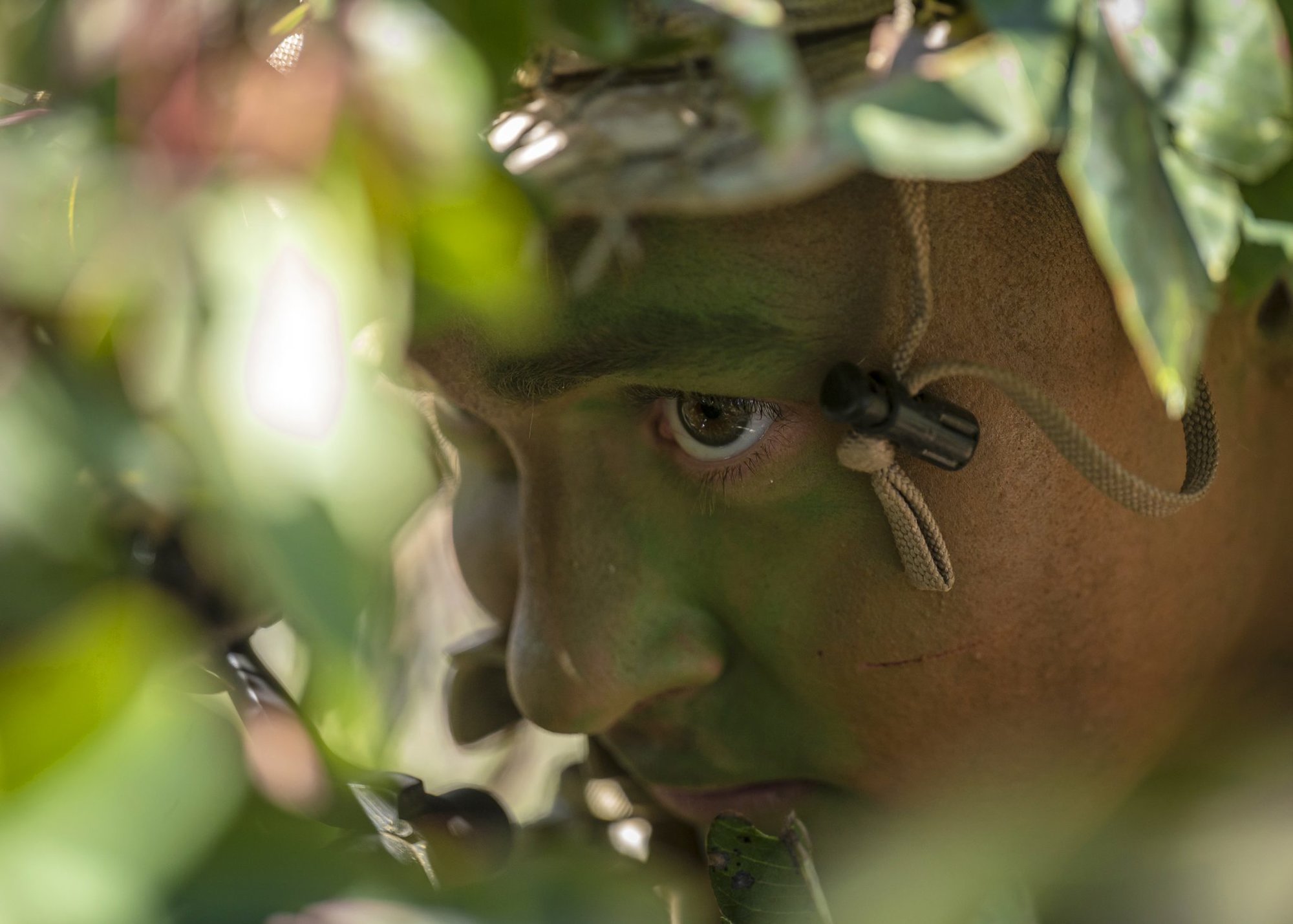
A Reconnaissance Sniper Course student sights in on his target during stalking training March 1, 2021. Photo by Ethan E. Rocke/Coffee or Die Magazine.
Under an overcast sky on an urban warfare range aboard Marine Corps Base Camp Pendleton, a shooter waits for an instructor’s signal.
“Let’s go!” the instructor shouts, sprinting toward a nearby building and quickly up a flight of stairs. Kitted in full body armor, helmet, and assault pack, the shooter strains to keep up, his heart rate climbing with every step. Then, in an unexpected twist, the instructor leads the student down more stairs and out the other side of the building, across another 75 yards and up to the second-floor window of another building.
Breathing heavily, the shooter takes a knee and hastily inserts a magazine in his M110 Semi-Automatic Sniper System, pulling back the charging handle to seat a round.
“This is your support,” the instructor says, pointing to the window frame. “Staggered column, left to right, 300 meters. Let’s go!”
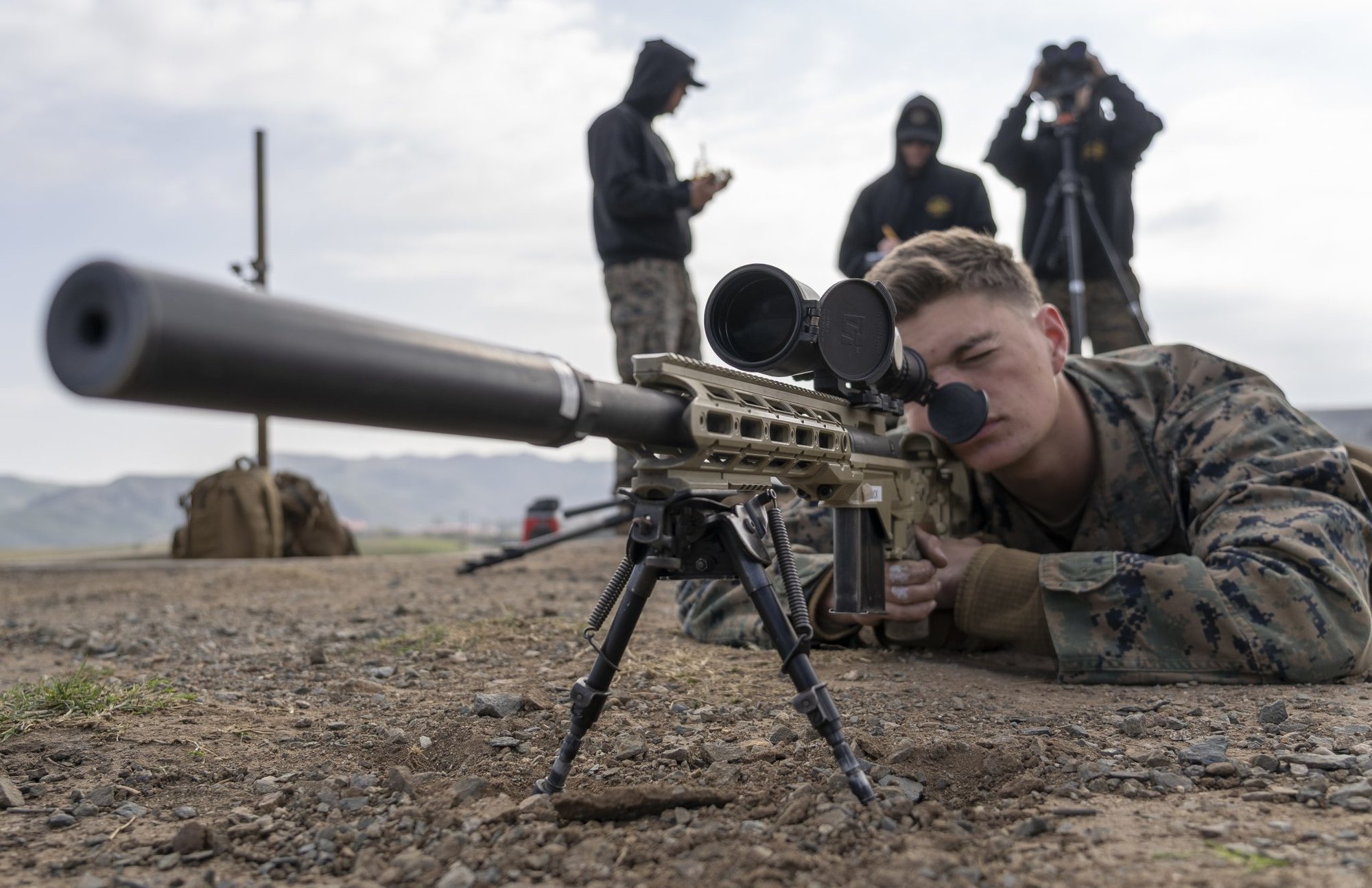
As he raises his sniper rifle to aim in and engage his targets, the shooter’s magazine — improperly seated — falls to the floor.
“Better get behind cover. What are you doing?” the instructor says.
The shooter secures his magazine, slaps it back into the rifle, and gets back up on target. He aims in, squeezes the trigger, and hears nothing but a disappointing click.
“Tap-rack-bang! Let’s go!” the instructor says, echoing the shooter’s instinctual reaction.
Finally, the shooter puts rounds on target in a drill designed to simulate eliminating an enemy element attacking a friendly unit. He hits 12 out of 14 targets before the instructor runs him to another room to engage three more. Breathing heavily, he hits two out of three and finishes the drill.
“Time!” an instructor calls out. “Two minutes, 54 seconds!”

This is not your daddy’s Marine sniper training. The shooter is one of 10 students in the Corps’ first-ever Reconnaissance Sniper Course. Designed by an elite cadre of Recon instructors, the nine-week course trains Recon Marines in the art of sniping.
For decades, the path to joining the Marines’ proud fraternity of Scout Snipers has gone through the Scout Sniper Course. From basic grunts to elite Recon Marines, the one-size-fits-all introduction to sniper tactics has been a test of mettle for generations, but multiple sources, who asked not to be identified, told Coffee or Die Magazine that Marine officials are considering reducing the number of SSCs the service runs annually and consolidating the storied special tactics school at one or two locations.
The Marines currently have three schoolhouses where they run the 13-week course: Camp Pendleton, California; Camp Lejeune, North Carolina; and Marine Corps Base Quantico, Virginia. A fourth training location on Marine Corps Base Hawaii was shut down in 2013.
Capt. Samuel Stephenson, a spokesman for Marine Corps Training and Education Command (TECOM), told Coffee or Die that while “there is no current reduction of Scout Sniper course quotas, the Marine Corps is actively seeking solutions to better streamline the production of Scout Snipers and limit course attrition.”
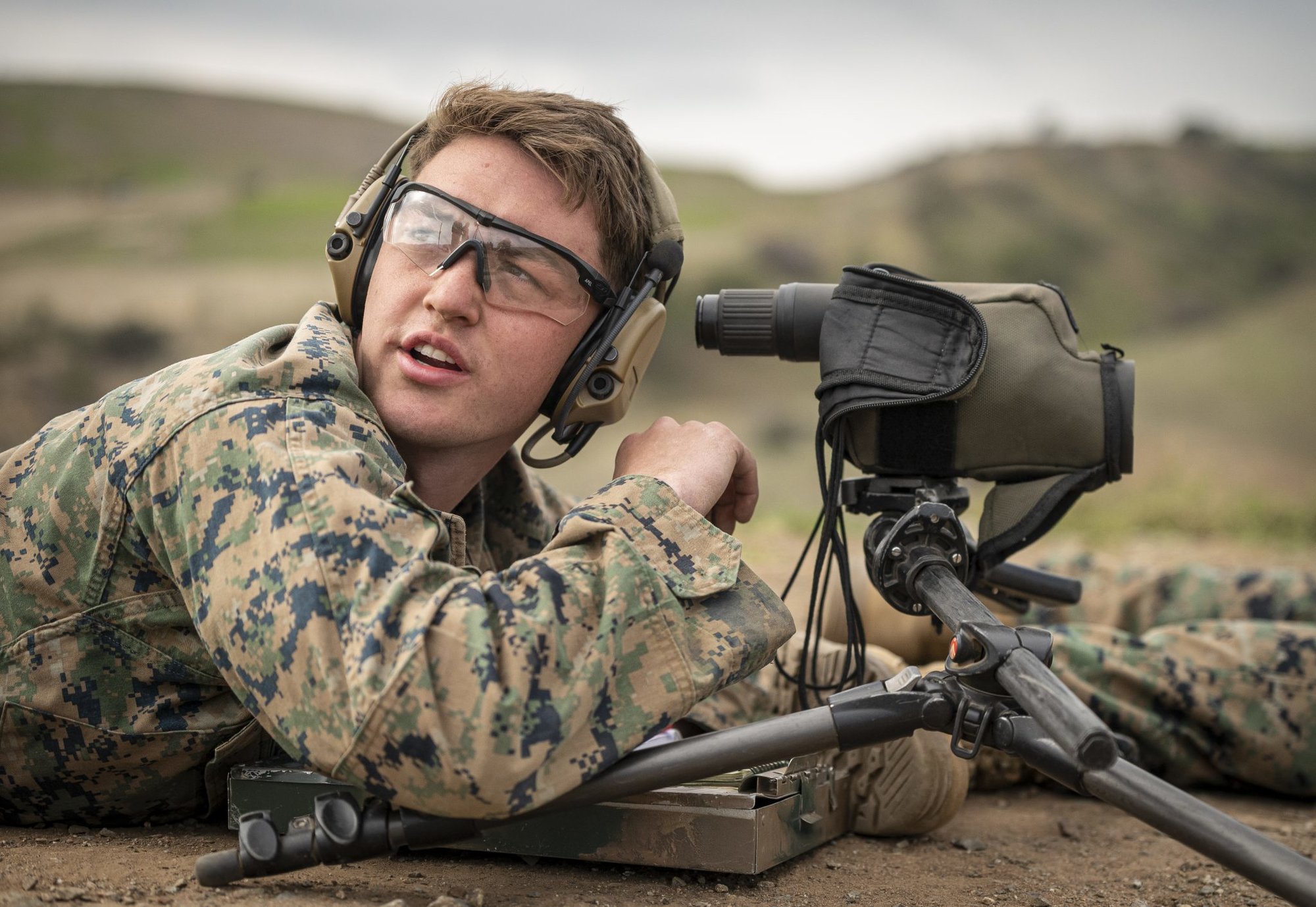
In that spirit, Marine leaders at Camp Pendleton’s Reconnaissance Training Company (RTC), Advanced Infantry Training Battalion, developed the Recon Sniper Course (RSC).
“Standing up our own course allows us to train up Recon snipers internally, and it allows the regular infantry to fill more seats in the legacy course,” Capt. Benjamin Lowring, then RTC commanding officer, told Coffee or Die in March. Maj. Morgan Jordan took command in April.
The Marines have three active-duty Recon Battalions: the Camp Pendleton-based 1st Recon Battalion, 2nd Recon Battalion on Camp Lejeune, and 3rd Recon Battalion in Okinawa, Japan. The 4th Recon Battalion is a Marine Reserve unit headquartered in San Antonio.
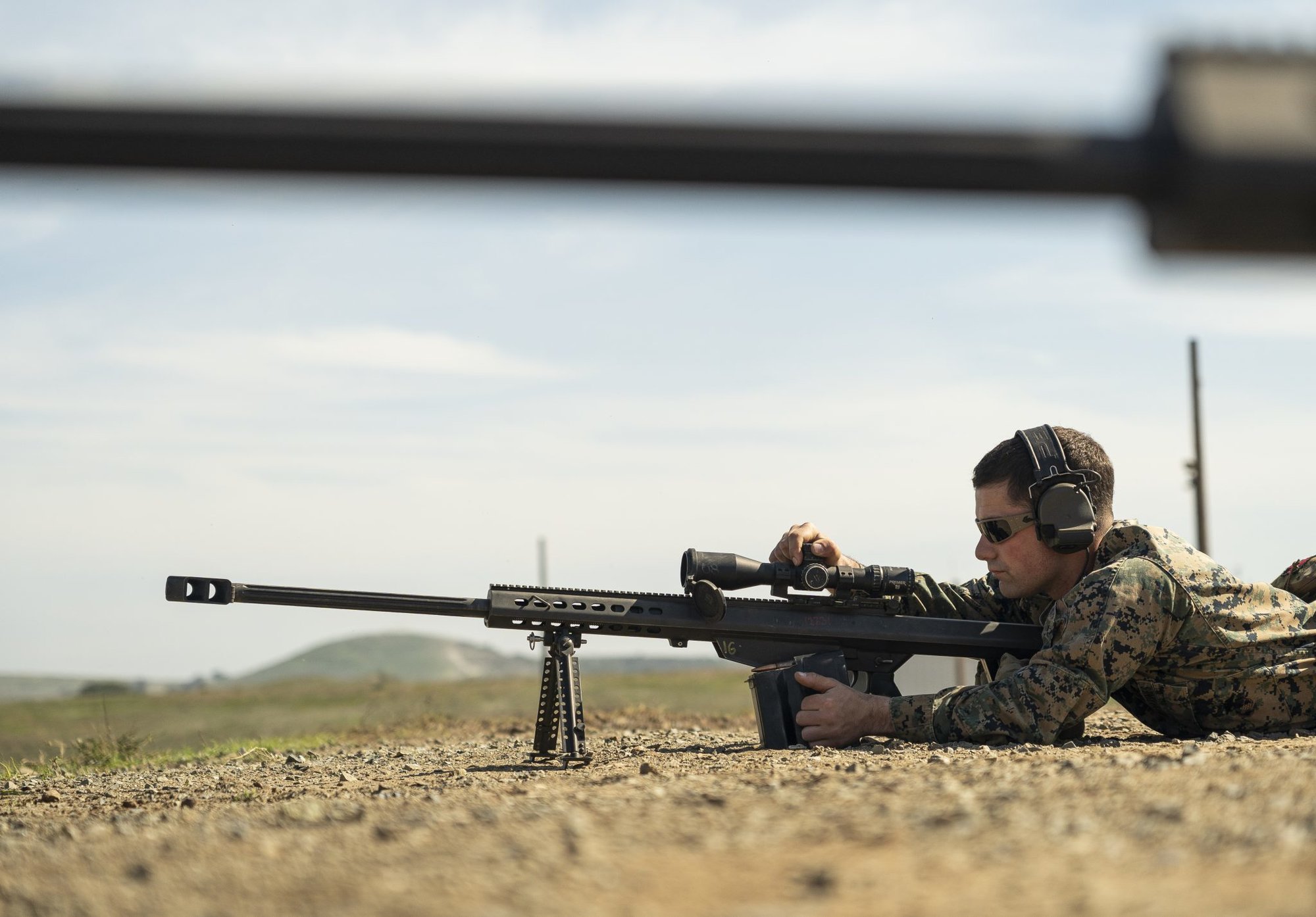
Though not officially designated as members of a special operations force, Reconnaissance Marines undergo extensive special tactics training and maintain capabilities similar to that of Navy SEALs, Army Special Forces, and Rangers. By the time they undergo sniper training, most Recon Marines will have completed almost a year of advanced training, including the five-week Reconnaissance Training and Assessment Program; the 14-week Basic Reconnaissance Course; Army Airborne School; the Marine Corps Combatant Diver Course; Survival, Evasion, Resistance and Escape School; and Military Freefall School.
“Recon Marines understand the importance of being a sniper and having that capability within the teams,” said Gunnery Sgt. Malachi J. Even, staff noncommissioned officer in charge of the RSC. “With some of the changes happening in the Marine Corps, we decided it was necessary to build a new course tailored to our needs in the Recon community.”
RSC chief instructor Staff Sgt. Benjamin L. Morrow, one of the course’s main architects, said training Recon Marines at RSC instead of the basic sniper course eliminates about four weeks of training redundancy and allows students to spend more time shooting and familiarizing themselves with myriad weapon systems and more advanced sniper tactics.

“When they attend the Basic Reconnaissance Course, our students learn and are evaluated on a lot of the skills that the Scout Sniper Course teaches, such as land navigation, call for fire and communications,” Morrow said. “They also gain proficiency in those tasks in their teams at a Reconnaissance Battalion.”
The first six weeks of RSC focus heavily on marksmanship, and students are evaluated on known- and unknown-distance shooting — day and night firing — with four weapon systems: the M40A6 sniper rifle, the Mk13 Mod 7 Sniper Rifle, the M110 Semi-Automatic Sniper System (SASS), and the .50-caliber M107 Special Application Scoped Rifle (SASR).
“RSC shooters qualify with every weapon system rather than shoot familiarization fires, and every scope and reticle combination,” Gunnery Sgt. Frank Simmons, a Recon instructor and recruiter at Camp Pendleton’s Recon Training Company, told Coffee or Die. “They also swap scopes out on different weapon systems to try and learn how they could use them effectively on a deployment or downrange in case they have to fall on weapons that aren’t organic to their unit.”
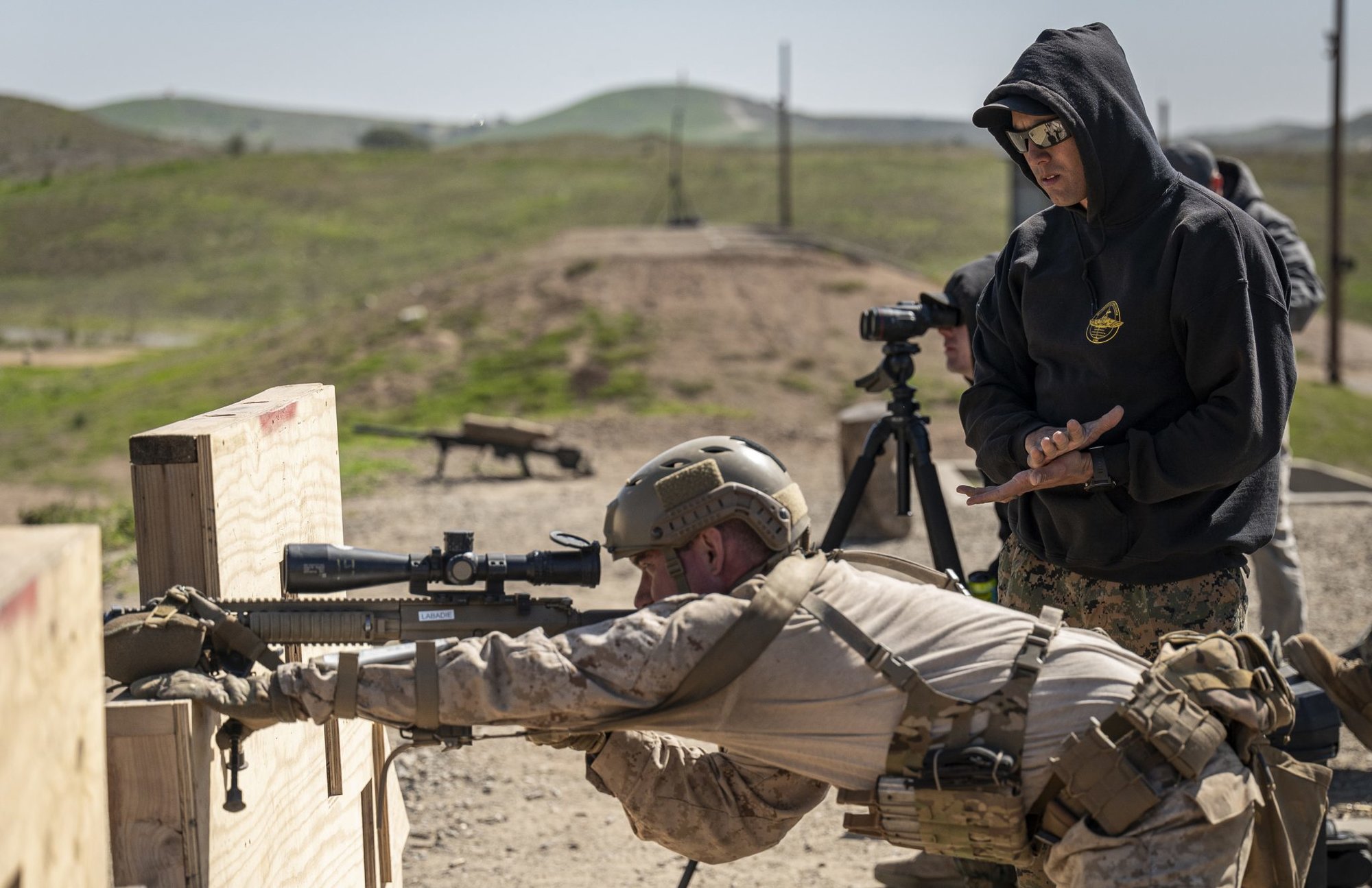
In the seventh week of training, students learn stalking and are evaluated on their ability to camouflage themselves effectively and move undetected as spotter-shooter pairs into sniper-hide positions, establish 360-degree concealment from enemy detection, and observe and fire on enemy targets.
The final two weeks focus on advanced marksmanship, urban sniper tactics, loophole shooting, and sniper-engagement planning.
“The experience we’ve gathered over the last two decades of warfare has helped tailor a lot of training,” Simmons said. “Multiple-threat, multiple-target engagements, time scenarios, shooting from barricades and through loopholes — things that I was never taught when I went through sniper school — are now a graded focus in our newer courses.”

The advanced sniper drills on the urban range were directly influenced by real combat actions in which Marine snipers played a pivotal role.
“Our students should be good at hitting steel, but we want our students to be combat shooters,” Morrow said. “We’re training these guys for combat, so we try to mirror our qualifications to a real-world scenario when possible.”
Simmons’ real-life experience as a 23-year-old Force Recon Marine in Afghanistan inspired one of the scenarios upon which RSC’s advanced urban drill is based.
“The idea is you’re going to eliminate multiple threats rapidly. And then you’re going to change positions, and you’re going to eliminate fixed positions,” Morrow says, describing the advanced drill he and his team put their students through in the final days of the course.

On Aug. 8, 2008, a force of roughly 300 Taliban fighters ambushed Simmons’ 30-man Force Reconnaissance Platoon near the village of Shewan in Afghanistan’s Farah province. Simmons watched as a Humvee carrying his friends erupted into a ball of flame after taking direct hits from multiple RPGs. The massive explosion blew a Marine out of the turret, and Simmons watched him roll off the edge of the vehicle.
“I looked at that, and I was like, ‘Oh my God. They’re all dead,’” Simmons said.
As the horrific scene of what appeared to be his friends’ fiery death seemed to play in slow motion before Simmons, the world around him erupted with intense machine-gun and RPG fire. Emboldened after taking out the Humvee, Taliban fighters climbed out of the trenches and irrigation ditches they’d been hiding in and rushed toward the burning vehicle.

“So in my head, I’m like, ‘Oh they’re going to drag their bodies away and use them for propaganda videos,’” Simmons said. “And I’m like, ‘Fuck if that is happening.’ So I just started smoking as many of them as I could. I pretty much knew I was going to die. There was no cover. There’s no way I was going to get back. So I just stayed there and kept shooting.”
Simmons crawled through hellfire to the top of an exposed berm and went to work. Ignoring the machine-gun fire and RPGs impacting all around him, he delivered devastatingly accurate sniper fire. Every time enemy fighters moved against his brothers, Simmons made them pay.
Peering through the scope on his SR-25 Mk 11 Sniper Rifle, he would calmly locate a target in his reticle, bring his surging adrenaline and pumping heart under control, and apply the marksmanship fundamentals that allowed him to kill at least 18 Taliban fighters in the first 10 minutes of what became a protracted battle. Simmons employed a cadence comparable to the belltower scene in Saving Private Ryan, where an Army Ranger sniper methodically picks off enemy soldier after enemy soldier as they try to kill his friends in the town below.
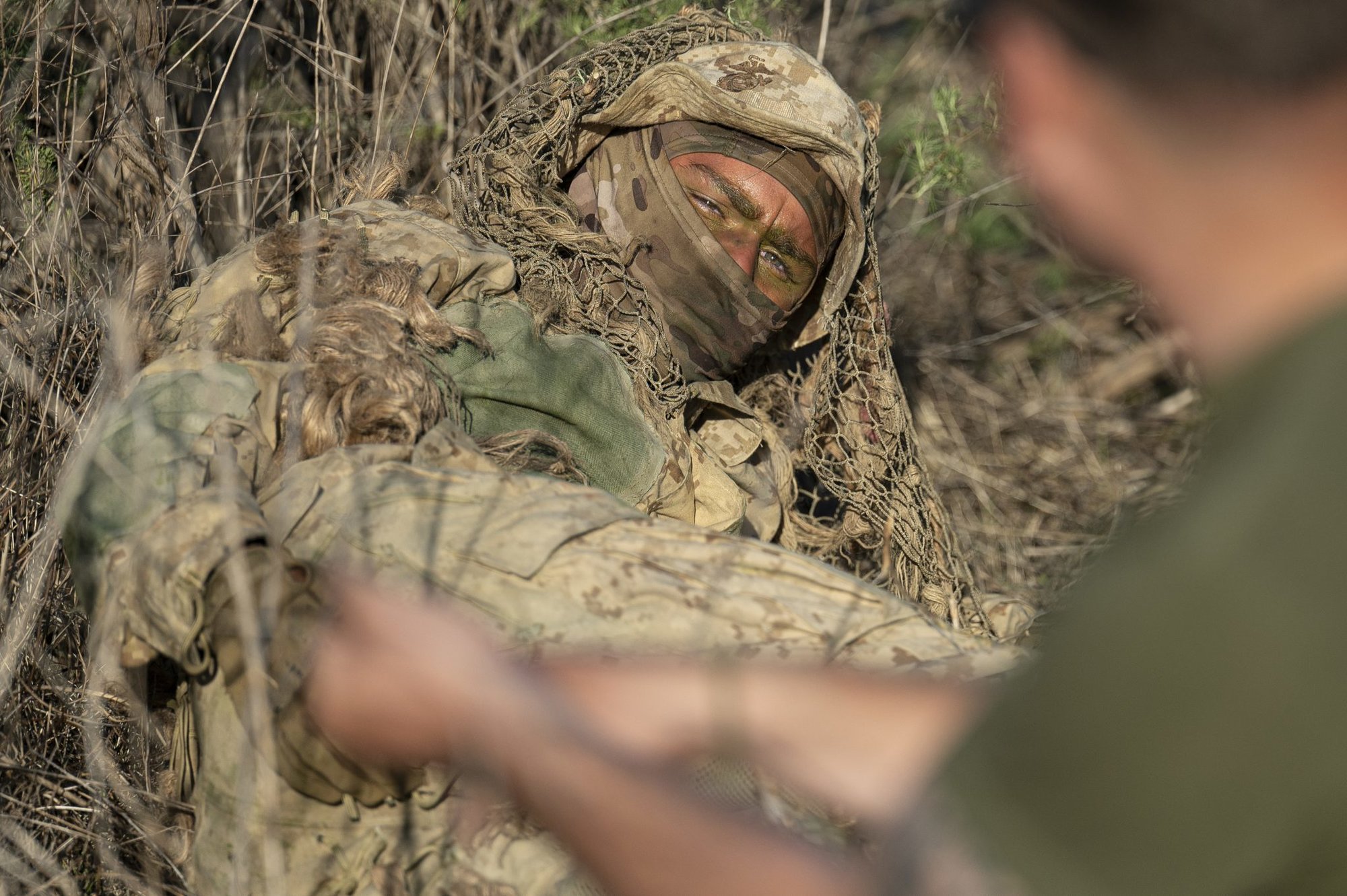
Remember the RSC shooter whose magazine dropped to the floor in the middle of a drill meant to simulate something like these scenarios? In Shewan, Simmons had his own race to reload, and the stakes were life or death.
“I had a ton of machine-gun fire coming at me,” Simmons recalled. “There were so many rounds impacting around me and kicking up the dirt that my teammates couldn’t see my body anymore. They thought I was dead. I was so close at one point because I had run out of ammunition, and I was trying to get to my magazine that was on my rig. I’m lying in the prone, and I kind of flop onto my back to pull my mag out. And as I pop it in, I look, and I was only maybe 100, 150 yards from this PKM machine-gunner. And I’m watching the last few rounds of his belt go through the weapon. And he’s looking at me, and I’m looking at him. And he’s frantically trying to reload his weapon.
“And I was like, ‘Nope,’” Simmons said, clucking his tongue and making a bassy concussion sound, like a 7.62 round hitting a skull.

While 20 would have been a nice, round number, Simmons couldn’t confirm kills on two fighters he knocked down who were able to crawl into ditches and out of sight. He’s confident they had a bad day.
Simmons was one of a dozen snipers in his 30-man Force Recon Platoon that day in Shewan, and they were soon joined by grunts from a platoon from Golf Company, 2nd Battalion, 7th Marines, a coalition mortar crew, and two F-15s. Skipping over a trove of mind-blowing details, Simmons succinctly punctuated the ultimate outcome of the eight-hour battle: “We slaughtered everyone.”
For his actions, then-Cpl. Frank Simmons received the Silver Star.

Thirteen years later, as Marine leaders at RTC developed the program of instruction for a new course to train snipers for the Corps’ Recon units, they looked to modern battlefields and the vital skills mastered and employed in combat by snipers like Simmons.
“We didn’t just step out and decide to do this lightly,” Even says. “Our heart is to maintain the tradition and the knowledge that we had, from all the Marines that learned hard lessons all the way back to Vietnam and before.”
As RTC leaders were designing their new course, Even and his cadre coalesced around the belief that it should not be a so-called haze-ex, or hazing exercise. The basic SSC, known for providing students a persistent gut check, is also known for its high attrition rates. While TECOM declined to provide any official attrition rates for SSC, some RTC staff estimated it to be as high as 50% to 60% — commensurate with that of the Basic Reconnaissance Course. While RSC staff have set high standards and expectations, Even said their goal is “to make this the best sniper program there is and never stop building.”
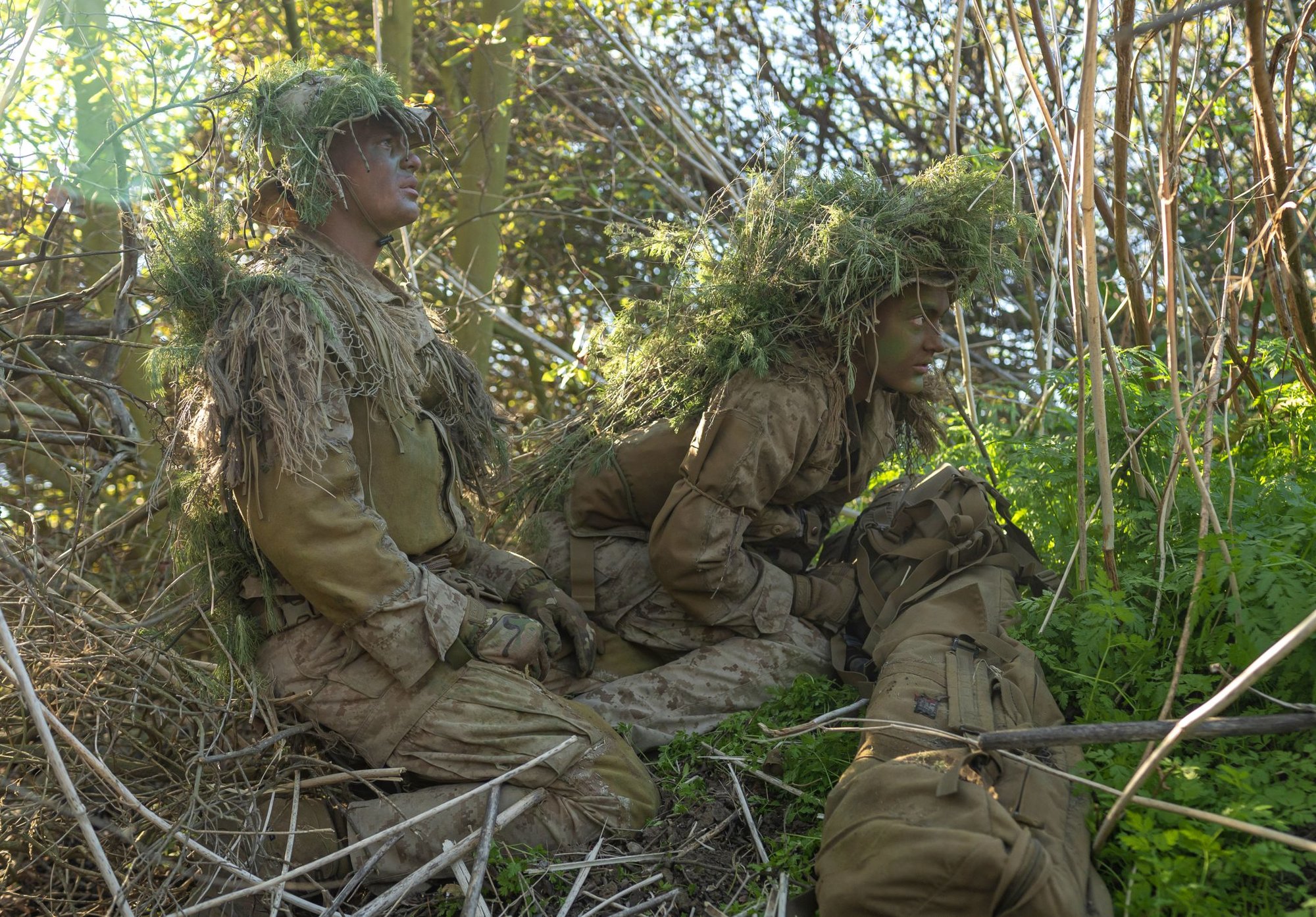
“That’s where our heart and motivation is. We hope to take highly qualified Reconnaissance Marines and make them the best snipers we can,” he said.
Simmons says the main priority is producing more highly qualified shooters and freeing up spaces at SSC for more regular infantry Marines.
“Our Recon snipers have had plenty of gut checks, far worse than most people realize,” Simmons says. “They come out of RSC qualified and confident on all weapon systems at ranges far more distant than they shoot in the SSC.”

The Marines of Recon Training Company had to run their pilot Recon Sniper Course with no increase in budget or instructor staff. Even pulled sniper-qualified Recon instructors from the different phases of the Basic Reconnaissance Course to stand up RSC.
In a small ceremony aboard Camp Pendleton March 19, 10 Reconnaissance Marines made history, becoming the first RSC graduates and earning the title Recon Sniper.
Lance Cpl. Jackson Camarata, who is assigned to 1st Recon Battalion on Camp Pendleton, was the only junior enlisted Marine in the course. He earned top honors as the class high shooter.

Student performance was evaluated and measured throughout the course, and each shooter’s overall accuracy percentage was calculated from scores during myriad known-distance and advanced marksmanship training events.
“Coming into this course with no long-range shooting experience, I got a lot of in-depth instruction and developed really valuable skills,” Camarata told Coffee or Die. “RSC takes basic Recon Marines and makes us into skilled, precision shooters. It turns us into a much more diverse and valuable asset for our teams. The instruction has been outstanding. Nothing compares to anything else I’ve done in the Marine Corps.”
Cpl. Jose Avilamata, another shooter from 1st Recon Battalion, was recognized during the ceremony with the Instructor’s Choice award.
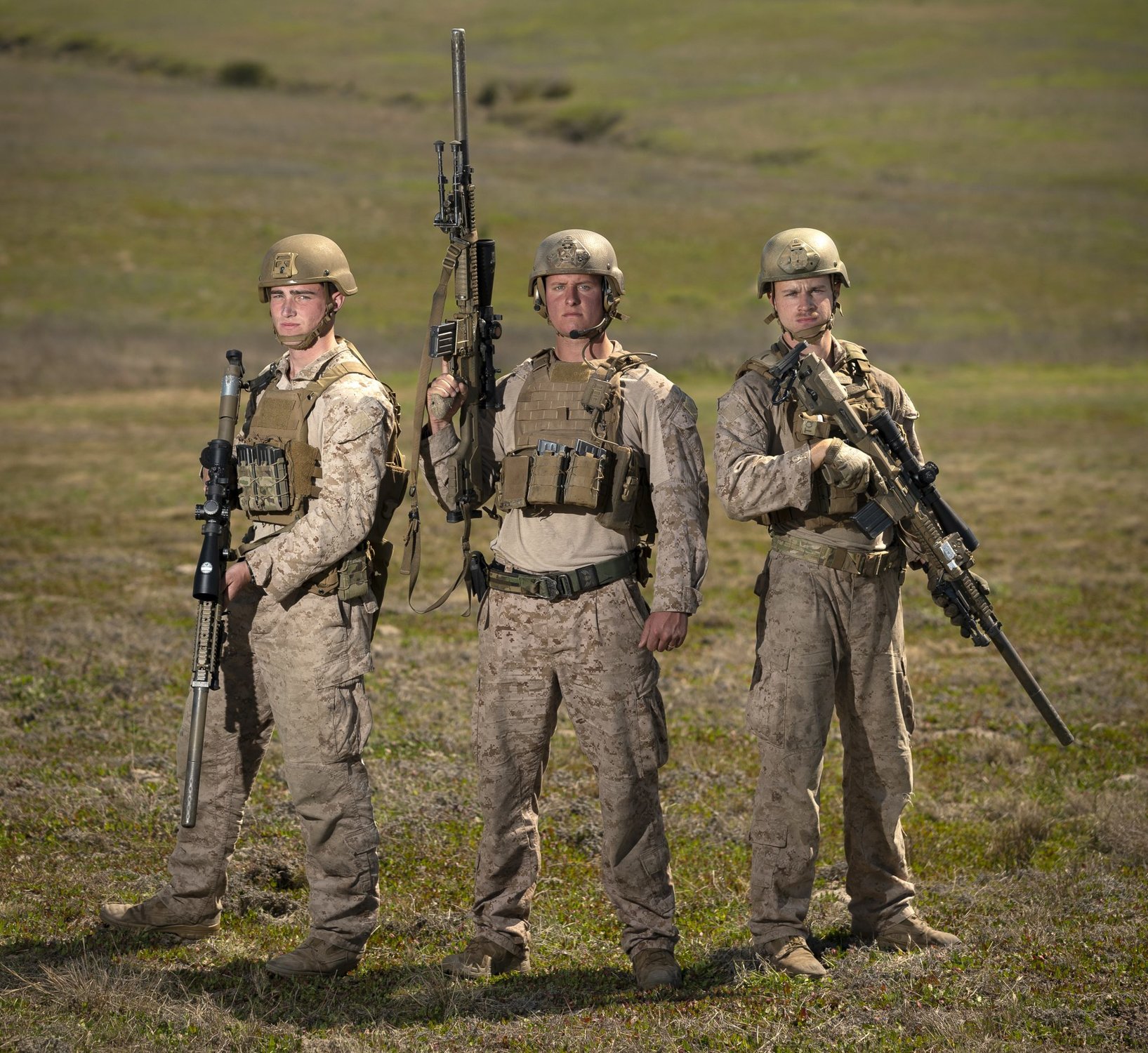
“Each RSC instructor voted on whichever student they enjoyed coaching most — whoever received and applied our instruction best,” Morrow said. “Cpl. Avilamata did a great job throughout the course. He had a great attitude all the time, and he’s someone we would definitely want in our team and to go downrange with.”
Each student received a graduation certificate during the small ceremony and is projected to earn the additional military occupational specialty of Reconnaissance Sniper, pending official approval from the Marine Corps.
In a private, informal ceremony March 18, each student received a .300 Win. Mag. projectile engraved by laser with his shooter number, which designates the year the course took place and the shooter’s ranking within the course.
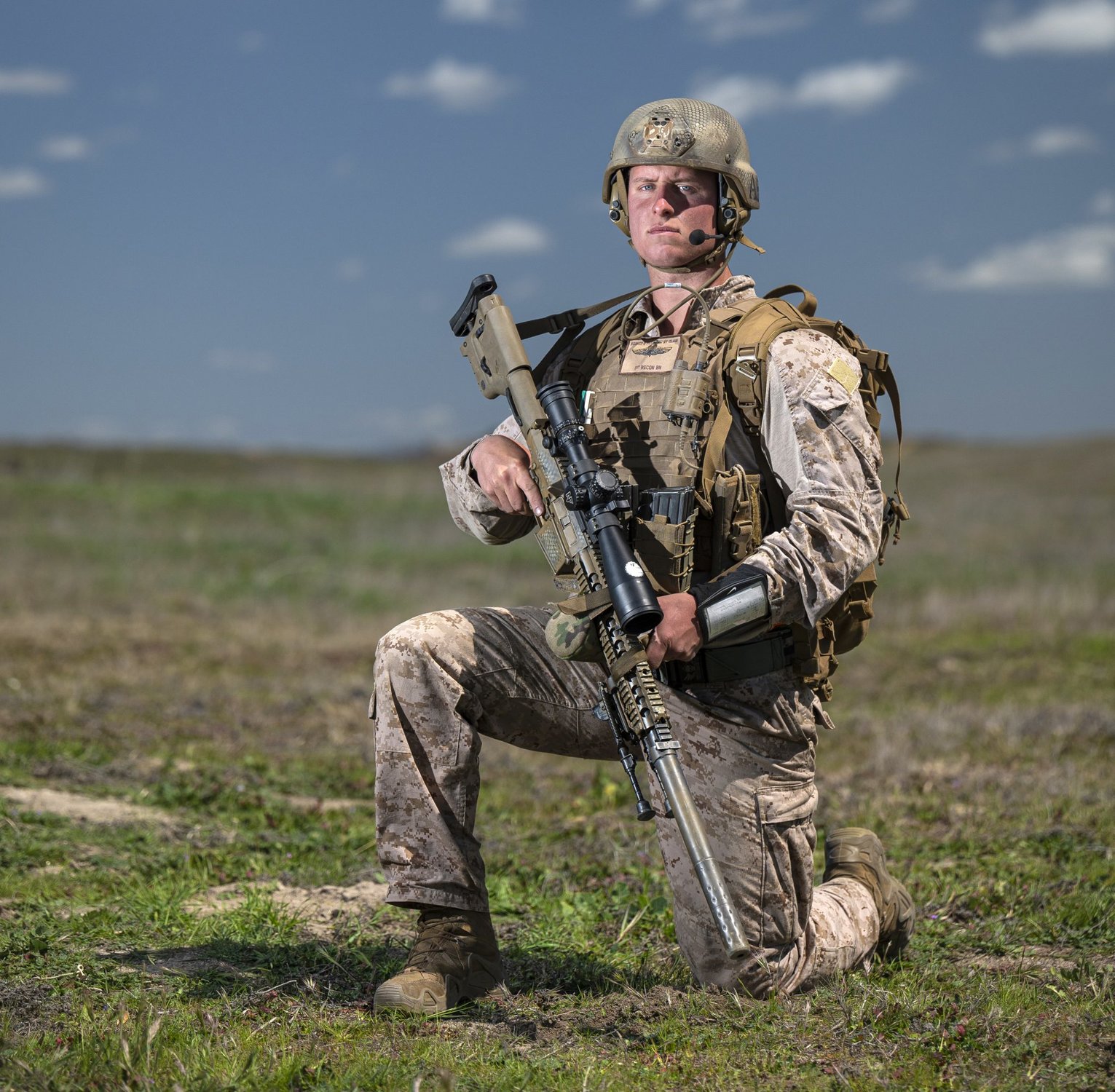
Engraved with “21-01,” Camarata’s projectile reflects his top ranking in the first course. For earning the Instructor’s Choice award, Avilamata was given the 21-02 projectile. The rest of the shooters’ projectiles reflect their ranking based on overall accuracy percentage.
RTC will run a second test course in September, and officials will then decide on whether to make the course permanent. With TECOM’s approval, the company would run three courses a year with 16 students in each course. RTC plans to maintain a student-to-instructor ratio of four-to-one.
Traditionally, Marines who complete SSC earn the additional MOS of 0317 — Scout Sniper — and receive their 7.62 mm HOG’s tooth.

The RSC instructors presented their students with a unique RSC HOG’s tooth to show the Recon Snipers’ connection to the Scout Sniper community and the camaraderie among all Marine snipers.
“This is a symbol of brotherhood between the communities,” Morrow said.
Even said he and his staff felt the symbolic projectile was an important gesture to acknowledge what the Marines accomplished by completing the course.
“This course and these Recon Snipers were made by Marine Scout Snipers, and they are now Marine snipers,” he said. “We are passing down this tradition to tie these snipers to our history.”
This article first appeared in the Summer 2021 edition of Coffee or Die’s print magazine as “The First-Ever Recon Sniper Course: Inside the Marines’ Latest Efforts to Produce More Elite Snipers.”
Read Next: What It Means To Be a Marine Corps Scout Sniper, According to 5 Scout Snipers

Ethan E. Rocke is a contributor and former senior editor for Coffee or Die Magazine, a New York Times bestselling author, and award-winning photographer and filmmaker. He is a veteran of the US Army and Marine Corps. His work has been published in Maxim Magazine, American Legion Magazine, and many others. He is co-author of The Last Punisher: A SEAL Team THREE Sniper’s True Account of the Battle of Ramadi.
BRCC and Bad Moon Print Press team up for an exclusive, limited-edition T-shirt design!
BRCC partners with Team Room Design for an exclusive T-shirt release!
Thirty Seconds Out has partnered with BRCC for an exclusive shirt design invoking the God of Winter.
Lucas O'Hara of Grizzly Forge has teamed up with BRCC for a badass, exclusive Shirt Club T-shirt design featuring his most popular knife and tiomahawk.
Coffee or Die sits down with one of the graphic designers behind Black Rifle Coffee's signature look and vibe.
Biden will award the Medal of Honor to a Vietnam War Army helicopter pilot who risked his life to save a reconnaissance team from almost certain death.
Ever wonder how much Jack Mandaville would f*ck sh*t up if he went back in time? The American Revolution didn't even see him coming.
A nearly 200-year-old West Point time capsule that at first appeared to yield little more than dust contains hidden treasure, the US Military Academy said.












